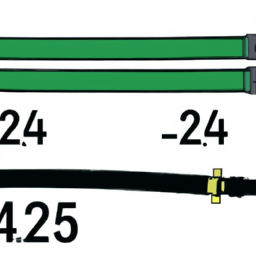Garden Hose What Size
Table of Contents []
What Size Is Garden Hose
Introduction
Are you wondering what size garden hose to purchase for your outdoor projects? There are many factors to consider when buying a garden hose to ensure you get the right size for your needs. This guide will provide a comprehensive look at all the important information you need to consider when buying a garden hose. We will cover topics such as the purpose of the hose, the size of the hose, the length of the hose, the materials used to make the hose and the types of connections available on the hose. Additionally, we will discuss the various attachments available for garden hoses and their compatibility with different types of hoses as well as the maintenance and lifespan of garden hoses.
Purpose of Hose
The purpose of a garden hose is to provide a strong and reliable connection between a water source and your garden or outdoor space. Depending on the type of connection you have, you should be able to easily connect your hose or equipment to the necessary water source with minimal effort. It's important to make sure that the hose you purchase can handle the pressure of the water source that you plan on connecting it to.
Size of Hose
The size of the garden hose you purchase depends largely on the distance away from the water source the water needs to travel and the size of the spray nozzle or attachments you plan to use. Generally, the bigger the hose, the better it will be able to handle the pressure of the water source and the farther away it will be able to transport the water from the source. Hose sizes are measured in terms of diameter or circumference. A typical garden hose has a diameter of about 1/2 inch or 5/8 inch and a circumference of 17mm or 20mm. The larger the diameter, the more water it can transport without compromising the pressure.
Length of Hose
The length of the garden hose you need to purchase depends on the distance the water needs to travel. Hose lengths typically range from 25 feet to 100 feet, with the longer hoses providing more room and flexibility for your outdoor projects. As a general rule of thumb, purchase a hose that is 5-10 feet longer than the distance the water needs to travel in order to accommodate any additional attachments and ensure a more reliable connection.
Materials Used to Make the Hose
Garden hoses are typically made from rubber or vinyl. Depending on the purpose of the hose, the type of materials used can make a big difference in terms of the strength of the hose, its flexibility, and its durability. Rubber hoses are typically more durable and flexible, while vinyl hoses are lighter and more affordable. It is important to understand the type of material used when choosing a hose, as some materials may be better suited to certain applications than others.
Types of Connections Available
When it comes to garden hoses, there are two main types of connections available: threaded and quick connect. Threaded connections are the most common type of connections and have a simple screw-on design. These connections are easy to use and provide a reliable connection, however, they are more prone to leaking over time and must be regularly maintained and checked for any signs of wear or damage. Quick connect hoses, on the other hand, provide a more secure connection and are generally less prone to leaking. While these hoses offer a more secure connection, they can be more difficult to install and may require the use of specialized tools or adapters.
Attachments and Compatibility
Garden hoses come with a variety of attachments and are typically compatible with a range of different attachments and accessories. Common types of attachments include spray nozzles, sprinklers, hoses, hoses with shut-off valves, and hoses with adapters for connecting to a variety of different fittings. When purchasing a hose, make sure to check the compatibility of the hose with the attachment or accessories you plan to use. Additionally, some hoses may require the use of specialized tools or adapters in order to connect the attachment properly.
Maintenance and Lifespan
Garden hoses require regular maintenance and should be inspected for signs of wear or damage on a regular basis. Additionally, storing your hose properly can help to extend its lifespan and prevent any damage or wear due to exposure to the elements. Generally speaking, a garden hose can last anywhere from 3-5 years with proper maintenance and care. However, depending on the type of materials used, the duration of exposure to the elements, and the regularity of maintenance, the lifespan of a garden hose can be drastically shortened.
Summary
When it comes to buying a garden hose, there are many factors to consider, including the purpose of the hose, the size of the hose, the length of the hose, the types of connections available, and the attachments and compatibility of the hose. Additionally, the materials used to make the hose and the maintenance and lifespan of the hose should also be taken into account. All of these factors should be carefully considered in order to ensure that you purchase the right size garden hose for your needs. With proper research and consideration, you can ensure that your garden hose functions effectively and provides a reliable connection between your water source and outdoor space.

Previous Page
Next Page
